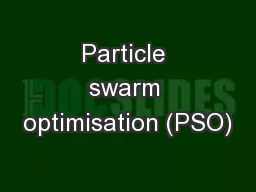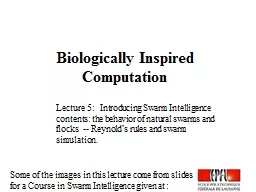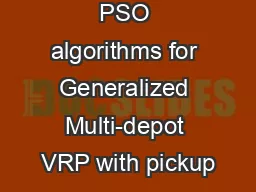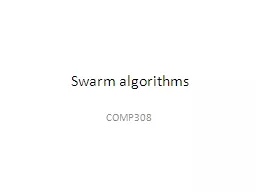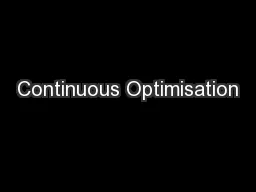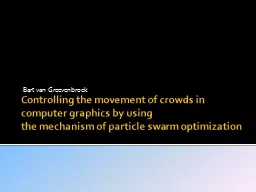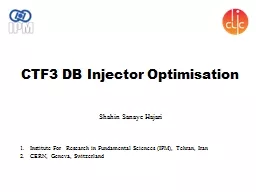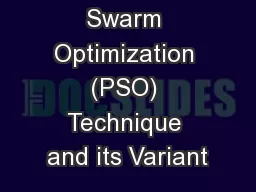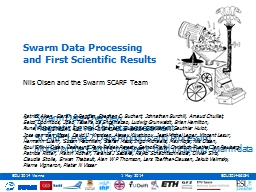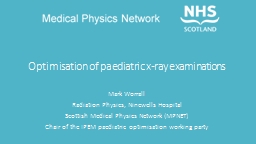PPT-Particle swarm optimisation (PSO)
Author : pamella-moone | Published Date : 2018-03-18
Perry Brown Alexander Mathews Image httpwwwcs264org2009projectswebDingYiyangdingrobbpsojpg Introduction Concept first introduced by Kennedy and Eberhart 1995 Original
Presentation Embed Code
Download Presentation
Download Presentation The PPT/PDF document "Particle swarm optimisation (PSO)" is the property of its rightful owner. Permission is granted to download and print the materials on this website for personal, non-commercial use only, and to display it on your personal computer provided you do not modify the materials and that you retain all copyright notices contained in the materials. By downloading content from our website, you accept the terms of this agreement.
Particle swarm optimisation (PSO): Transcript
Download Rules Of Document
"Particle swarm optimisation (PSO)"The content belongs to its owner. You may download and print it for personal use, without modification, and keep all copyright notices. By downloading, you agree to these terms.
Related Documents

